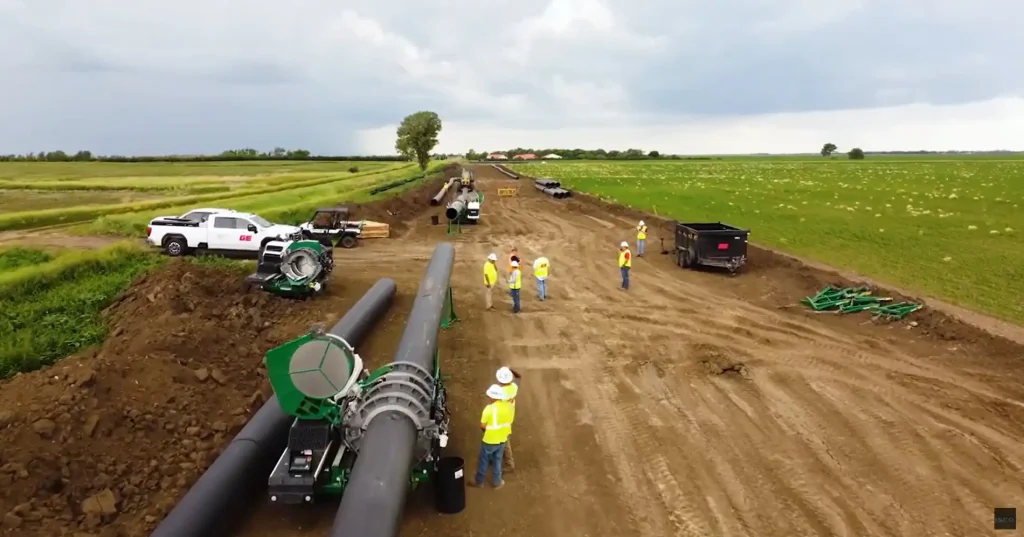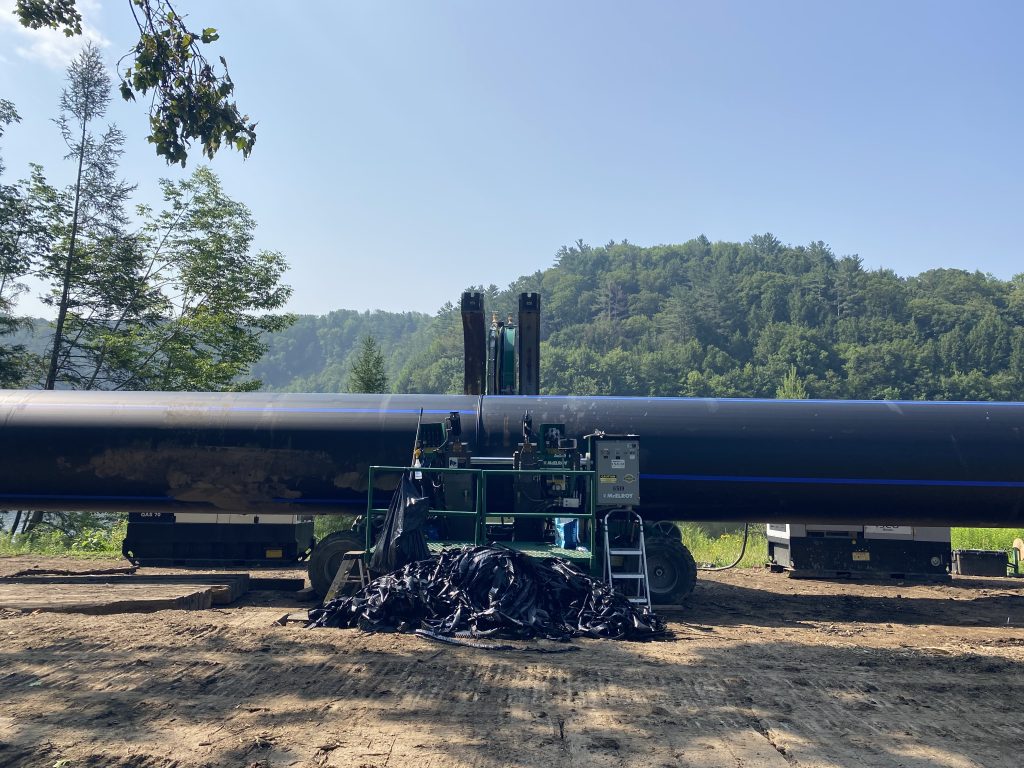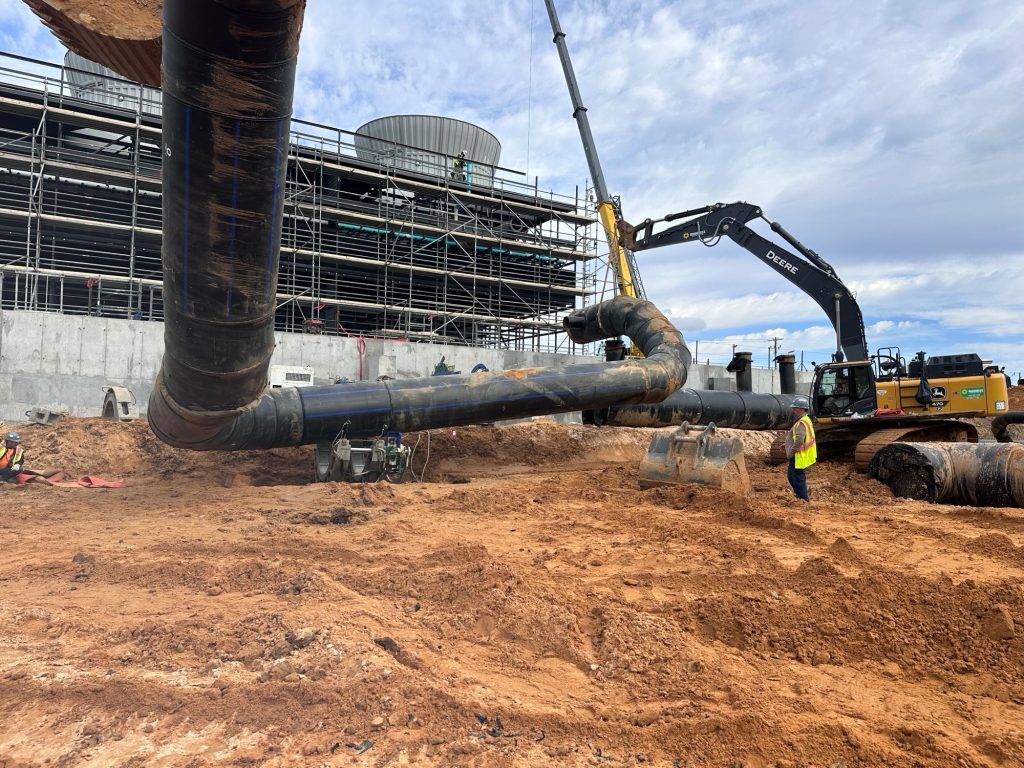Resources
Field Reports
Snap-Tite® Lines Oval Culvert under Remote Alaskan Airport Taxiway, Flights Resume as Scheduled
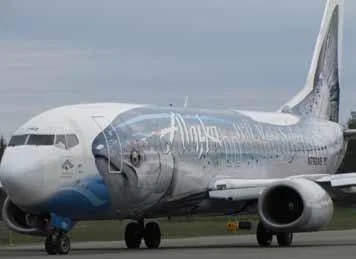
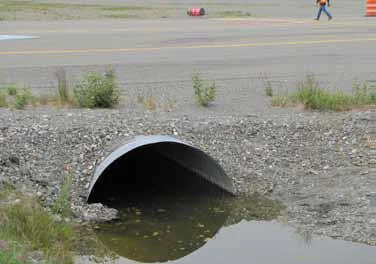
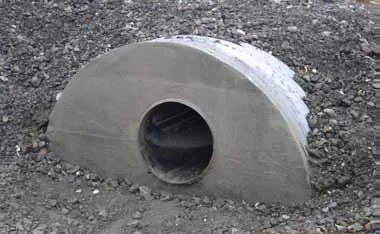
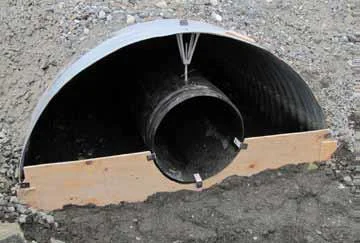
Background
The city of Yakutat is situated in a remote southeast region of Alaska, along the Gulf of Alaska. Its name means “the place where canoes rest.” The isolated location is accessible only by air, boat or barge and has limited services available. The city has an airport – Yakutat Airport; and because of the area’s remoteness, the airport is vital to the transport of goods and people.
The Problem
At the Yakutat Airport, a major airline was not able to use its main taxiway to reach the runway for take-off due to a failing oval culvert underneath. The culvert showed signs of collapse under the weight of the Boeing 737-800 series aircraft that used the taxiway. The steel pipe was only five years old and though it did not show signs of corrosion, it was failing. The arched corrugated metal pipe (CMP) culvert was 6’9” by 4’11”. Besides aircraft trafficking over this taxiway, the 737 rear landing gear also sat right on top of the underlying pipe, contributing to the pressure placed on the culvert. The U.S. Federal Aviation Administration (FAA) required the airport to fix the problem immediately and have the taxiway up and running.
The Solution
The Southeast Region Hydraulics Engineer for the Alaska Department of Transportation, Bob Trousil, PE, spoke with Snap-Tite® distributor Grey Langemo of GRECOR Construction, LLC about potential solutions for the emergency repair. Several options were considered due to the unique shape and weight requirements of the culvert under the taxiway. The solution had to withstand certain pressure requirements attributed to the weight of the aircraft and landing gear using the taxiway.
Inside the existing culvert, there was approximately 20 inches of gravel fill that remained, therefore the effective available opening (rise) was about 38 inches. So, one option the DOT considered was the possibility of using an oval-shaped Snap-Tite® pipe liner.
Another consideration was to use a smaller, standard round Snap-Tite® pipe liner (24-inch diameter pipe) to line the culvert while using grout to fill the larger annular space between the old culvert and the new Snap-Tite® pipe. The proposed grout mix had to meet the specified design loads anticipated at the site – the static force of Boeing 737-800 series aircraft at maximum takeoff. The grout mix design had to achieve sufficient strength. Snap-Tite® recommended a grout mix that would meet the necessary pressure rating to withstand the taxiway loads. The high pressure grout and 24-inch Snap-Tite® pipe liner option was chosen as the best solution.
Snap-Tite® is made of high-density polyethylene (HDPE) pipe. It has a patented male/female machining at each end of the HDPE pipe that is ‘snapped’ together, piece-by-piece, and pushed into the full length of an existing pipe. Any annular space and voids between the old culvert and new liner are filled in with grout. The pipe liner is available in lengths from two feet to 50 feet, and is available for culverts with diameters from eight inches to 84 inches. Snap-Tite® also meets American Association of State Highway and Transportation Officials (AASHTO) Standard M326 for rehabilitating culverts.
The Installation
Prior to inserting the Snap-Tite® pipe into the culvert, all the sections of the Snap-Tite® pipe were snapped together outside of the channel. Then, the joined pipe was rolled down into the channel and inserted inside the culvert. Once the Snap-Tite® pipe liner was in, the channel was de-watered. The liner was secured in place using metal stabilizing jacks from the top of the culvert to the liner. Then the first bulkhead was put in place and grouting tubes inserted for the initial phase of the grouting process. The first phase of grout was pumped in through the tubes above the Snap-Tite® pipe liner starting at the center and alternating side-to-side from both ends.
Then the second bulkhead was put in place for the second grouting phase, just over the pipe liner. The second phase of grout was pumped in similarly to the first method. Next a vent and observation ports were cut on the top of both ends of the CMP.
Finally, the process was repeated a third time and the last of the grout was pumped into the annular space. After the grouting was complete, the forming materials, bulkheads and de-watering system were removed. The site was restored back to normal.
The old culvert was successfully lined with the 24-inch Snap-Tite® pipe. It took a total of 85 cubic yards of grout to fill the annular space. In addition, throughout the project, grout cubes were taken and tested. The grout yields and strengths were better than expected (approximately 3700 psi) and the taxiway opened back up to normal operations on schedule. “Given the emergency status this project was assigned, and the subsequent urgency to reopen Taxiway A in Yakutat, we appreciated the engineering and managerial staffs at Snap-Tite®, together with the installation contractors diligence, to quickly address, mobilize and rehabilitate this culvert in a very rural part of Southeast Alaska,” said Trousil. “There were absolutely no allowances for error or delay. Under strict performance and material standards set by the Alaska Department of Transportation and Public Facilities, the team performed a successful installation that was on-time, on-task and within the original budget.“
About Snap-Tite®
- Meets AASHTO Standard M326 for rehabilitating culverts.
- Offers flexibility for insertion into misaligned concrete or rusted deteriorated corrugated metal pipe.
- Offers a safe method for installers and doesn’t require traffic control.
- Tough but lightweight, the Snap-Tite® joint makes a solid water-tight mechanical connection that can be pushed or pulled.
Due to the Snap-Tite® system’s installation flexibility and cost-effectiveness, it continues to provide successful results for many projects throughout the U.S. and internationally.
For more information on Snap-Tite® please visit www.culvert-rehab.com.
